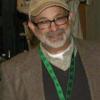Solar Observation at Frosty Drew Observatory

A shot of the sun's photosphere and sunspots taken during the Frosty Drew Observatory Solar Projection Program.
A warm and very hearty welcome to everyone, especially newcomers to astronomy who may be feeling intimidated by the depth of knowledge and expertise of our contributors and the Rhode Island astronomy community. Herein is offered a monthly look at the Universe geared to beginners, as seen through the perspective and enthusiastic eyes of a beginner—me. Together, we’ll explore the awesomeness of the sky and try to get our minds around many of the imponderables of the Universe. We’ll marvel and learn together as we gaze into the same spaces our distant ancestors did, ask the same questions they did, and forge our place in the link between the past and future.
This month and next, we’ll start our explorations not with the nighttime sky, often thought the realm of astronomy, but rather, daylight time. To be sure, distant stars and planets populate the daytime expanse of the heavens as they do at night, but for our own star, the Sun, go unviewable. We’ll come to appreciate the Sun, this beautiful orb of energy and nurturer of all life. And, we’ll acknowledge that mankind’s romance with her will be but a brief fling, for she will die in a mere five billion years; a drop in the bucket in cosmic time.
As many of you know, the Frosty Drew Observatory is open every Friday night throughout the year, weather permitting. During the months surrounding the winter solstice, viewing through the telescopes begins at 6pm and increases to about half an hour after sunset during the warmer months. Typically, in the past, the action did not begin until 9pm or so during the summer. Thanks to the foresight of the Frosty Drew astronomers, the Observatory is now offering telescopic viewing of the summer skies at 6pm, as well. This is definitely good news for the younger set that still get to make their bedtime, along with parents in tow, who must get them there.
Through the use of Frosty Drew resources, the Sun is now being tracked, as she readies herself for sleep in the western sky. Specifically, an 8” diameter Schmidt Cassegrain telescope manufactured by the Meade Corporation and equipped with a powerful solar filter has the unenviable task of looking at the Sun, something that we must never, never do ourselves. A Schmidt Cassegrain telescope is a designation for a telescope that works through a combination of both lenses and mirrors, as opposed to other types that work through either/or. A camera is attached to the telescope and live images are transmitted across the Frosty Drew network and displayed on screens across the grounds, including the Sky Theater and Observatory dome itself. The resultant projected images clearly show numerous sunspots on the photosphere, or, luminous visible surface of the Sun. Very shortly, a 60mm Coronado SolarMax solar telescope will be added to display images of solar prominence, also known as solar flares, arched streams of hot gas projecting from the Sun's surface.
I encourage you to take advantage of this new program at Frosty Drew, and avail yourself of the opportunity to view an image of the Sun in a totally safe way. Talk to the astronomers and volunteers about what you see, and stay for the evening viewing of the cosmos after nightfall. I’ll be doing the same. Say hello.
Next month, we’ll look at what we’ve seen as it relates to what astronomers know about our fantastic ball of energy and sustainer of life. Till then, Happy Viewing!
Mark Sweberg
Your comments on this column are welcome. E-mail me at mark.sweberg@gmail.com
- Author:
- Mark Sweberg
- Entry Date:
- Jun 7, 2013
- Published Under:
- Mark Sweberg's Columns

